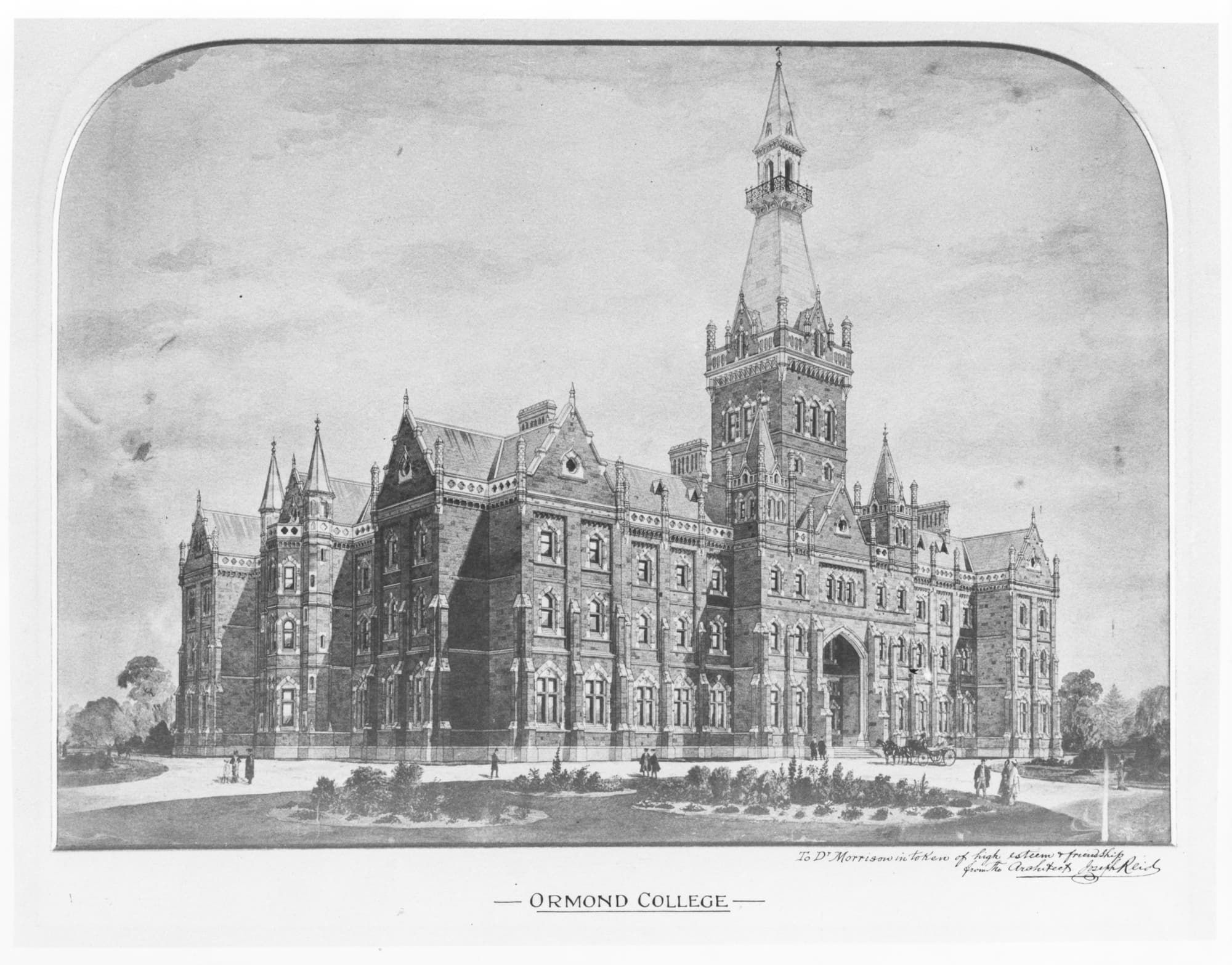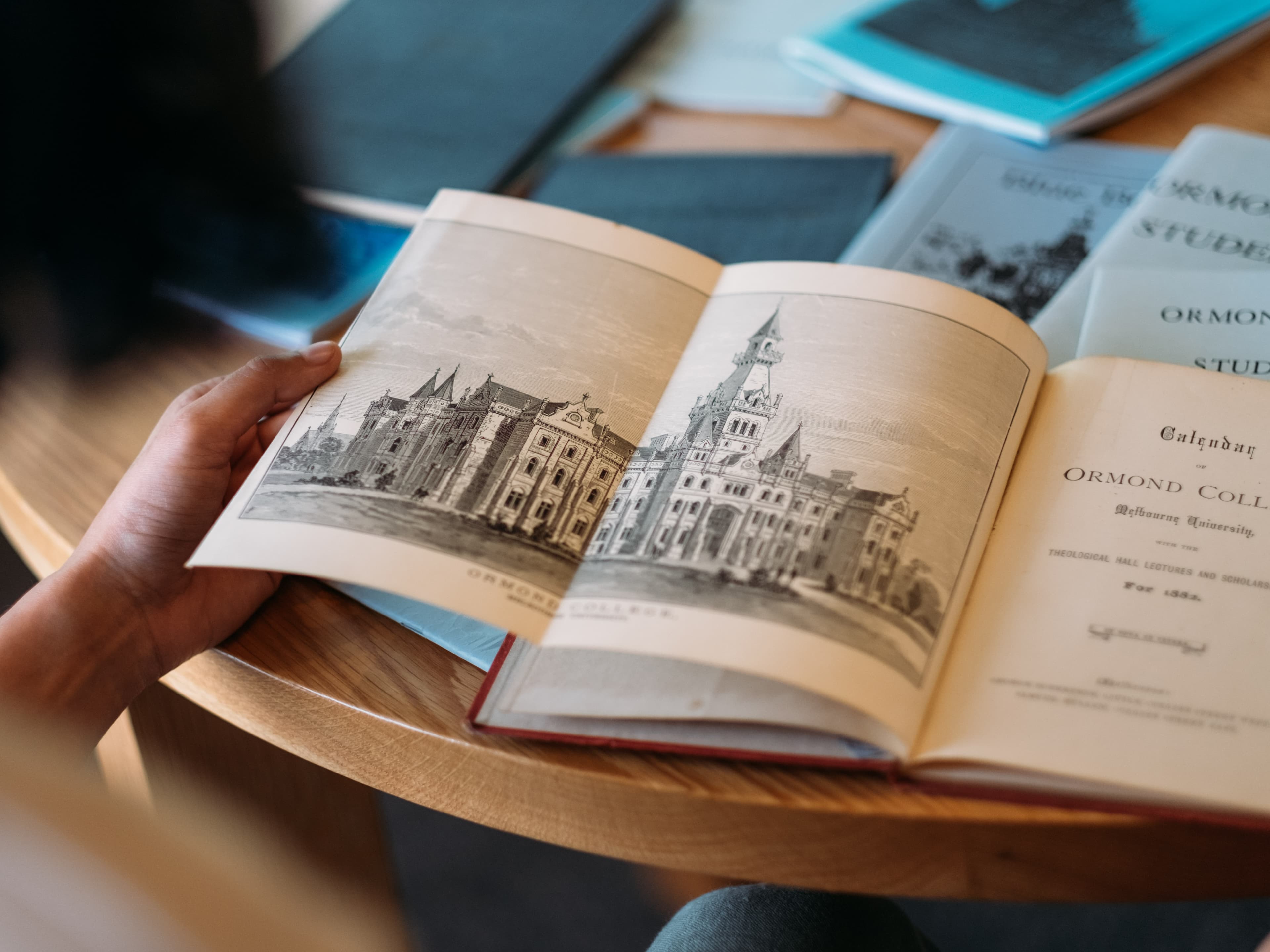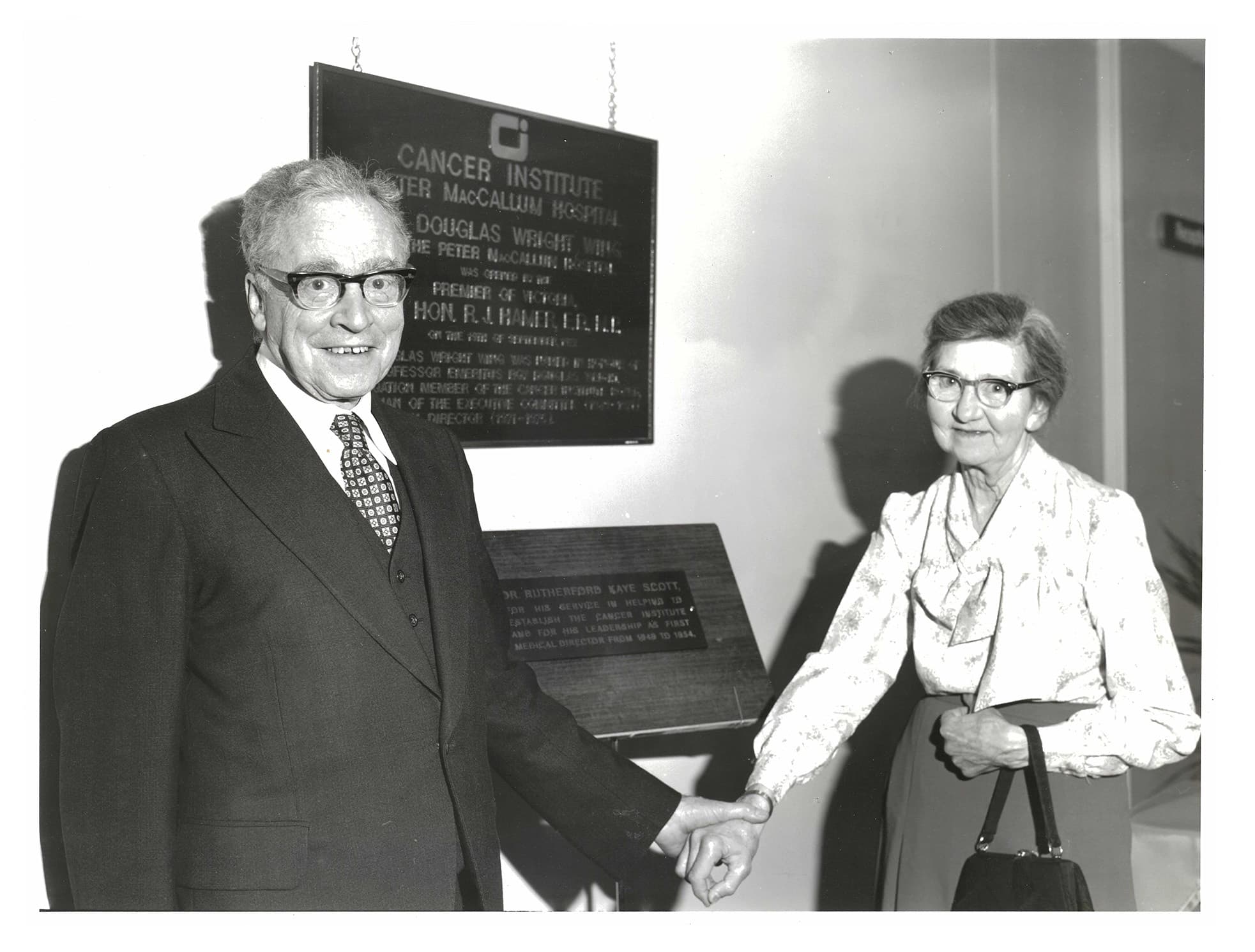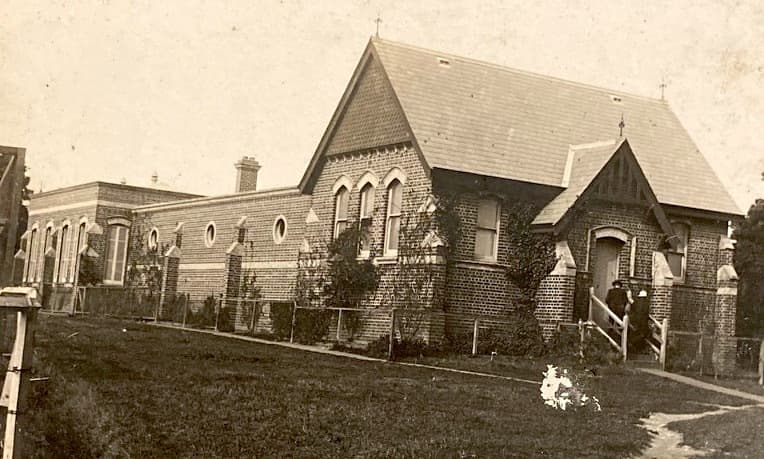Our history
From its heritage buildings to its pioneering programs, Ormond’s story is one of renewal and inclusion – shaped by tradition, resilience and a commitment to making a difference.
History and traditions
Ormond College was founded in 1881 and is one of the oldest residential student colleges at the University of Melbourne. When Ormond College first opened its doors, its founders were inspired by progressive ideas of the Scottish Enlightenment.
Ormond College was conceived as a home to students ‘of all faiths and none’ and ‘all means and none’. Today, it continues to educate young people to make a difference in their communities.
Dr Areti (Ari) Metuamate, Master and Head of College
First peoples
The history of this place is, of course, much older than the University. For many thousands of years, the Wurundjeri People of the Kulin Nation have been the Traditional Owners of the land on which Ormond College stands. The Wurundjeri are the people of the wurun, the river white gum. We acknowledge the past and continued connection of the Wurundjeri People to Country, Land and Water.A generous vision
The building of the College was enabled by donations from several benefactors. The largest donation came from Francis Ormond, a Western District farmer and landowner. Born in Scotland and a devout Presbyterian, Francis Ormond originally conceived of the College as both a theological hall, to train Presbyterian ministers, and as a home for university students.Francis Ormond believed in the transformative power of education and wanted the College founded in his name to be more than simply a place for students to live: he believed strongly in the power of education to transform society and equip graduates with both the potential and the sense of responsibility to make the world a better place. Later Ormond was instrumental in the establishment of the Working Men’s College, now RMIT, and the Gordon Memorial Technical College, now the Gordon Institute in Geelong.A remarkable ethos
The College’s founders were inspired by ideals of the Scottish Enlightenment. They believed that education made for better people: individuals who could make good moral decisions and citizens who would contribute productively to their community. At the time of opening, Ormond College declared itself a home for all university students, not just students from the founders’ Presbyterian community. This was a progressive idea at the time, as most educational institutions were established by, and reserved for, specific Christian denominations. The Ormond College community also included women students from as early as 1885. Women attended tutorials and were involved in Ormond’s scholastic life as non-resident students. Ormond became fully co-educational when women joined the College as residents in 1973.
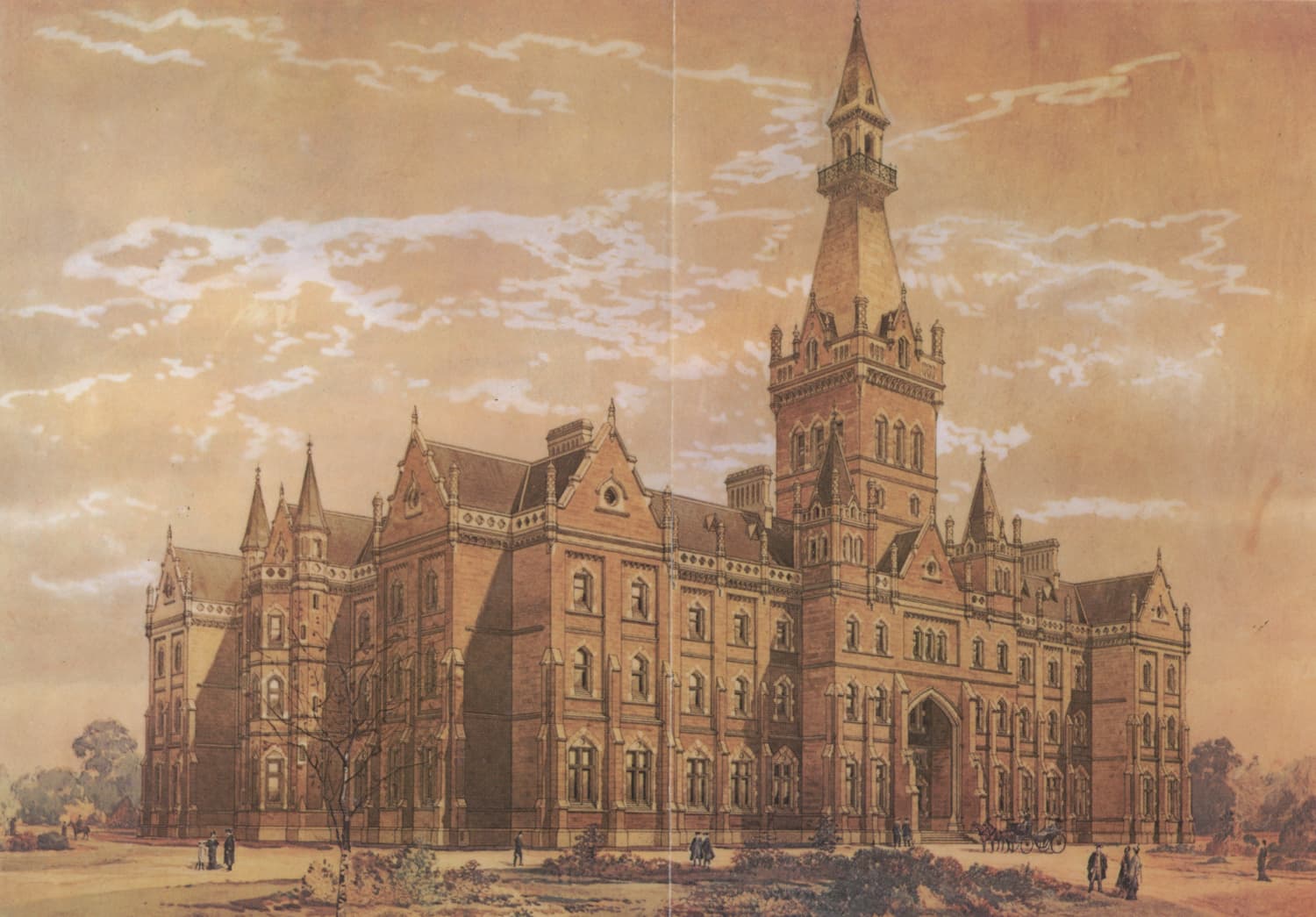
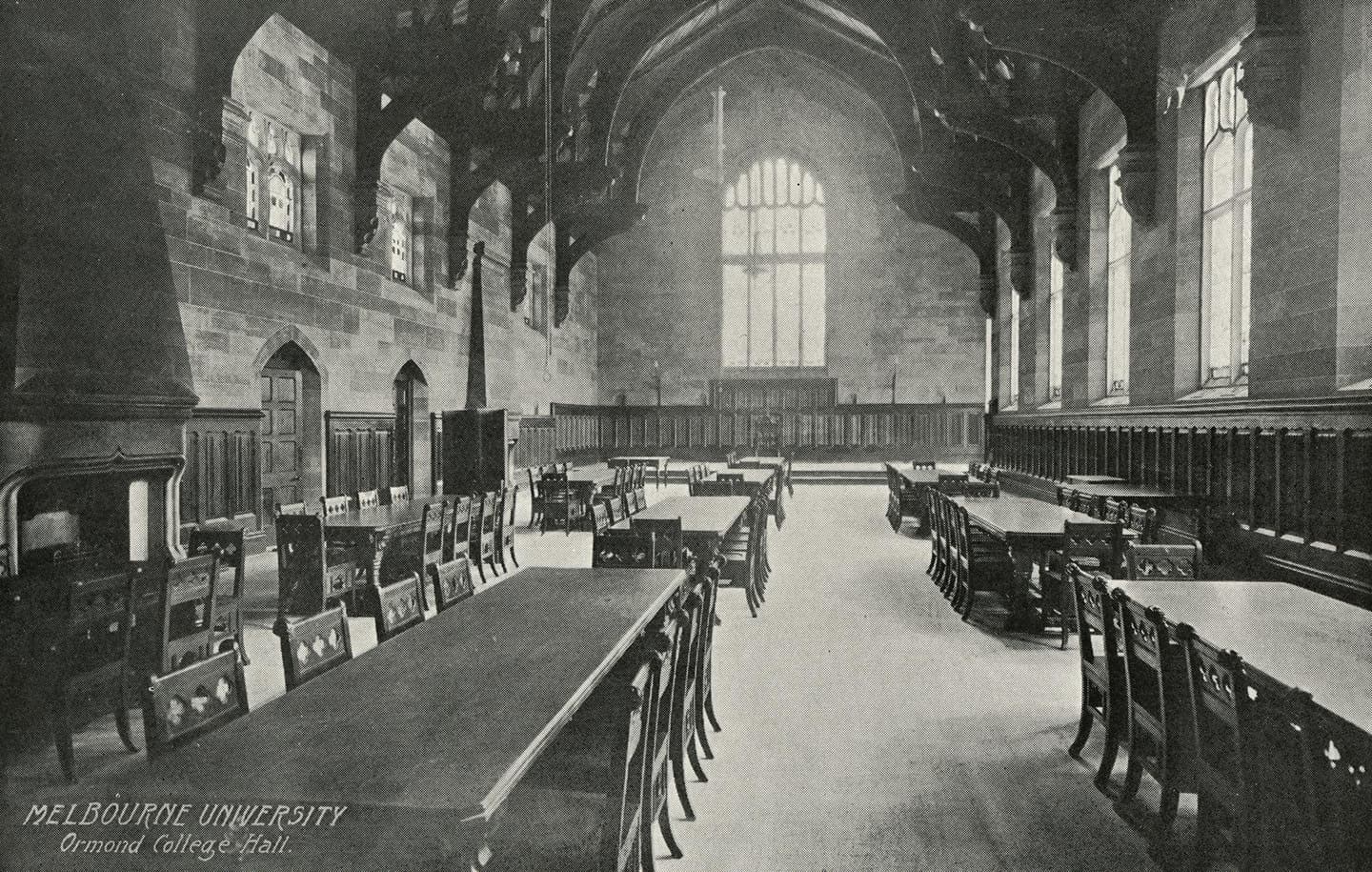
Expansion and change
As the University of Melbourne expanded in the post-war years, demand for residential College accommodation increased dramatically. In response, Ormond added a series of new buildings beside its magnificent, heritage-listed Main Building. The new accommodation was designed by the Melbourne architectural firm Grounds Romberg and Boyd and was noted for its distinctive and ground-breaking design. When the fourth new building, McCaughey Court, was opened in 1968, Ormond’s resident student population grew to over 250 students for the first time. The College also added a new Master’s Lodge and Library during this period.Growth and development
In recent years the Ormond community has expanded to include a thriving graduate community of over 40 students, housed in two custom-built buildings. In 2015 Ormond founded the Wade Institute of Entrepreneurship, following a gift from entrepreneur and alumnus Peter Wade. Wade Institute creates and empowers the next generation of entrepreneurs and delivers The University of Melbourne’s Master of Entrepreneurship, among other programs.Ormond graduates have gone on to make significant contributions to Australia. Our alumni are well represented in state and federal parliaments, and are leaders in academia, business, agriculture, military, law, sport, education, and many other areas of public life. Ormond College is committed to providing an outstanding residential and learning experience for members of the University of Melbourne through its core values of community, learning, integrity, diversity, heritage and respect.Commitment to reconciliation
Ormond values Aboriginal and Torres Strait Islander cultures as fundamental to Australia’s identity, and we are deeply committed to reconciliation. In 2008, we laid the foundation for this vision through the inception of the Ormond College Indigenous Program (OCIP). In 2024, we launched our fourth Reconciliation Action Plan (RAP), with a focus on truth-telling, amplifying Indigenous voices and promoting First Nations leadership.Ormond College acknowledges the difficult history surrounding its benefactors, including Francis Ormond and John Wyselaskie, and the broader context of colonisation in which the College was established. In acknowledging the achievements, generosity, and legacy of our benefactors, we also acknowledge at whose expense this benevolence was derived – specifically, the Wadawurrung and Djab wurrung Traditional Owners.145 years of Ormond College
From its 19th‑century origins to the vibrant, inclusive community it is today, Ormond’s story is shaped by bold ideas, enduring resilience and a spirit of continual renewal.
Foundations and Vision (1853–1879)
The idea of Ormond College began decades before its doors opened. Sparked by the establishment of the University of Melbourne and driven by the generosity of Francis Ormond, this era laid the groundwork for a residential college shaped by both Scottish Enlightenment ideals and a commitment to community, learning, and service.
Early Growth and Tradition (1881–1914)

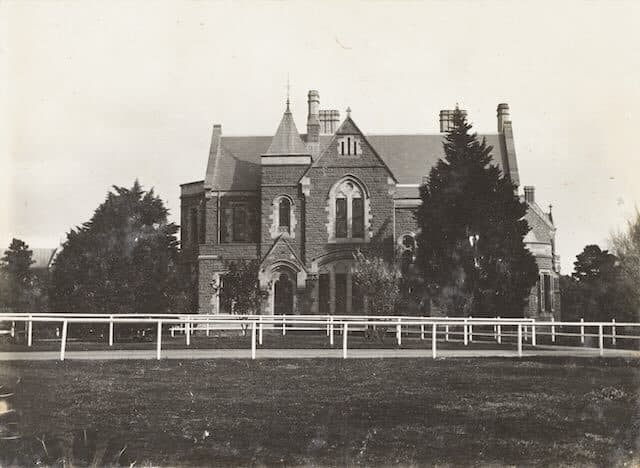
From its formal opening in 1881, Ormond quickly became known for its distinctive architecture and vibrant student life. The construction of the Dining Hall and Allen House set the tone for traditions that continue today, including Formal Hall and student-led cultural life.
War and Recovery (1914–1946)
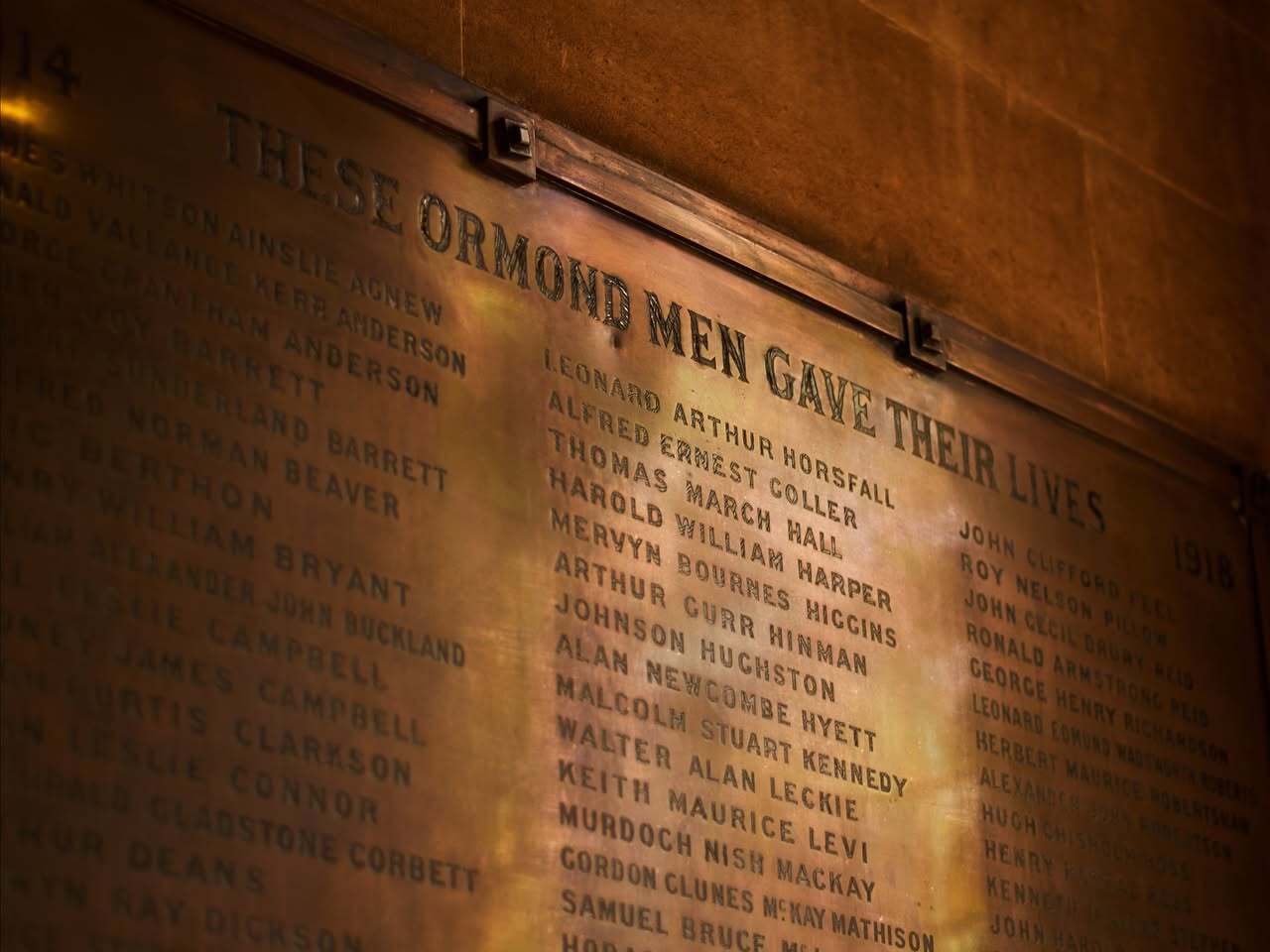
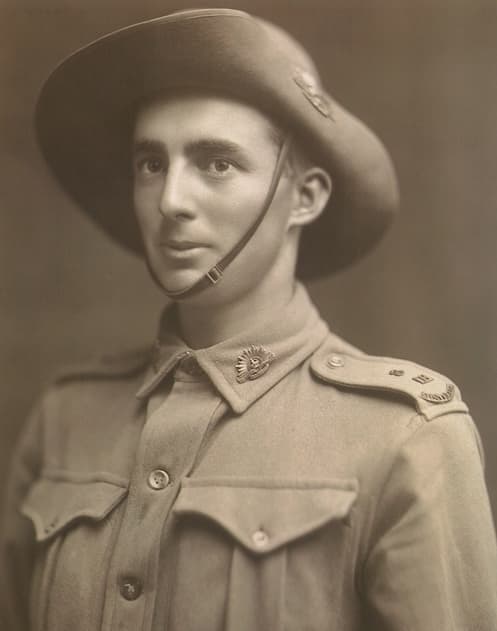
Two world wars and the Great Depression tested the resilience of the Ormond community. Students and alumni served with distinction, and life at College adapted to wartime realities. In the post-war years, renewed energy and optimism saw the College rebuild and reimagine its future.
Expansion and Co‑Education (1946–1974)
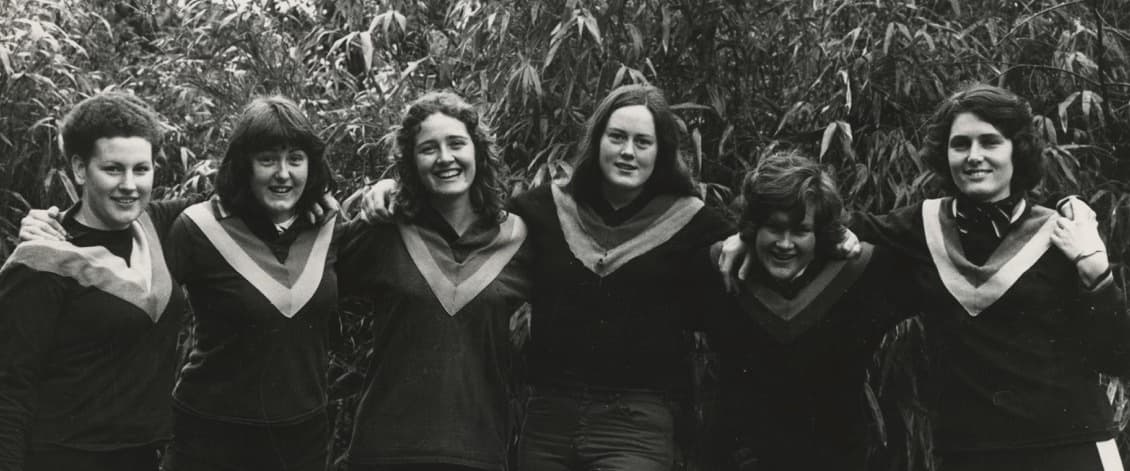

The post-war decades brought rapid growth. New buildings such as Picken Court and McCaughey Court reflected a modern architectural vision, while the opening of the MacFarland Library enriched academic life. This era culminated in a historic milestone: Ormond becoming fully co‑educational in 1973.
Modernisation and technology (1975 - 1992)
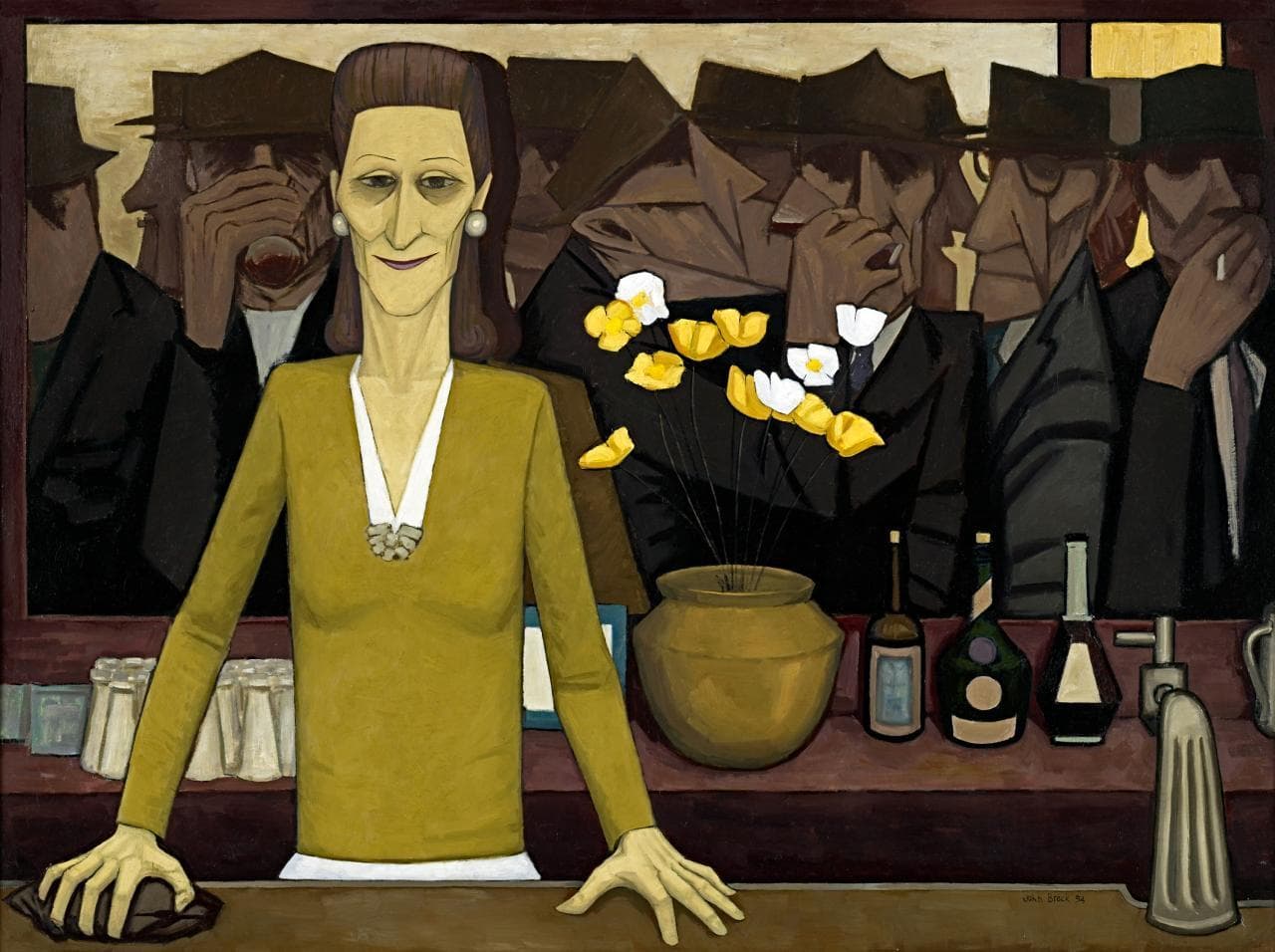
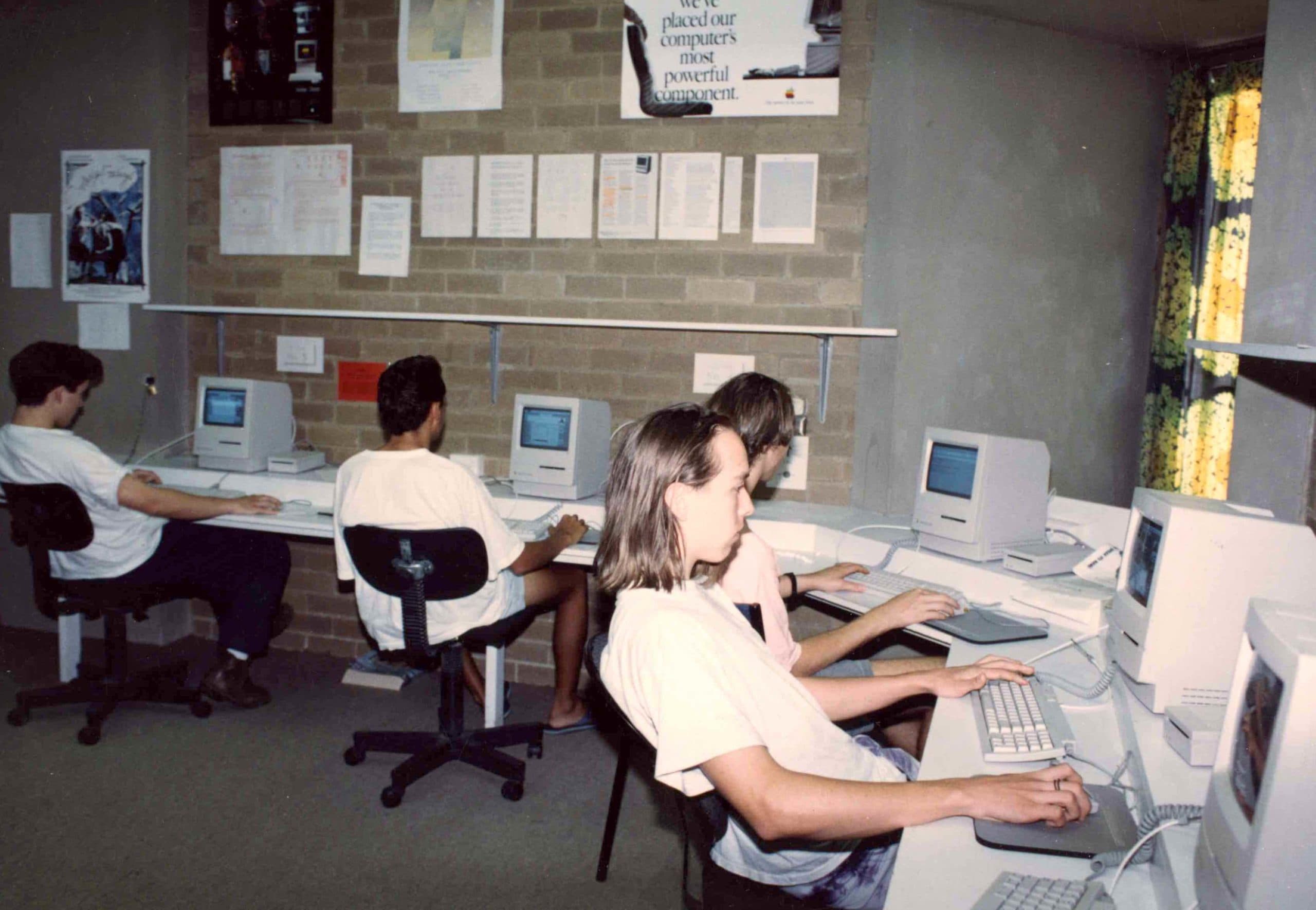
Fully co-educational, Ormond welcomes telephones, the internet and its 100th birthday.
Renewal and Global Outlook (1994–2014)
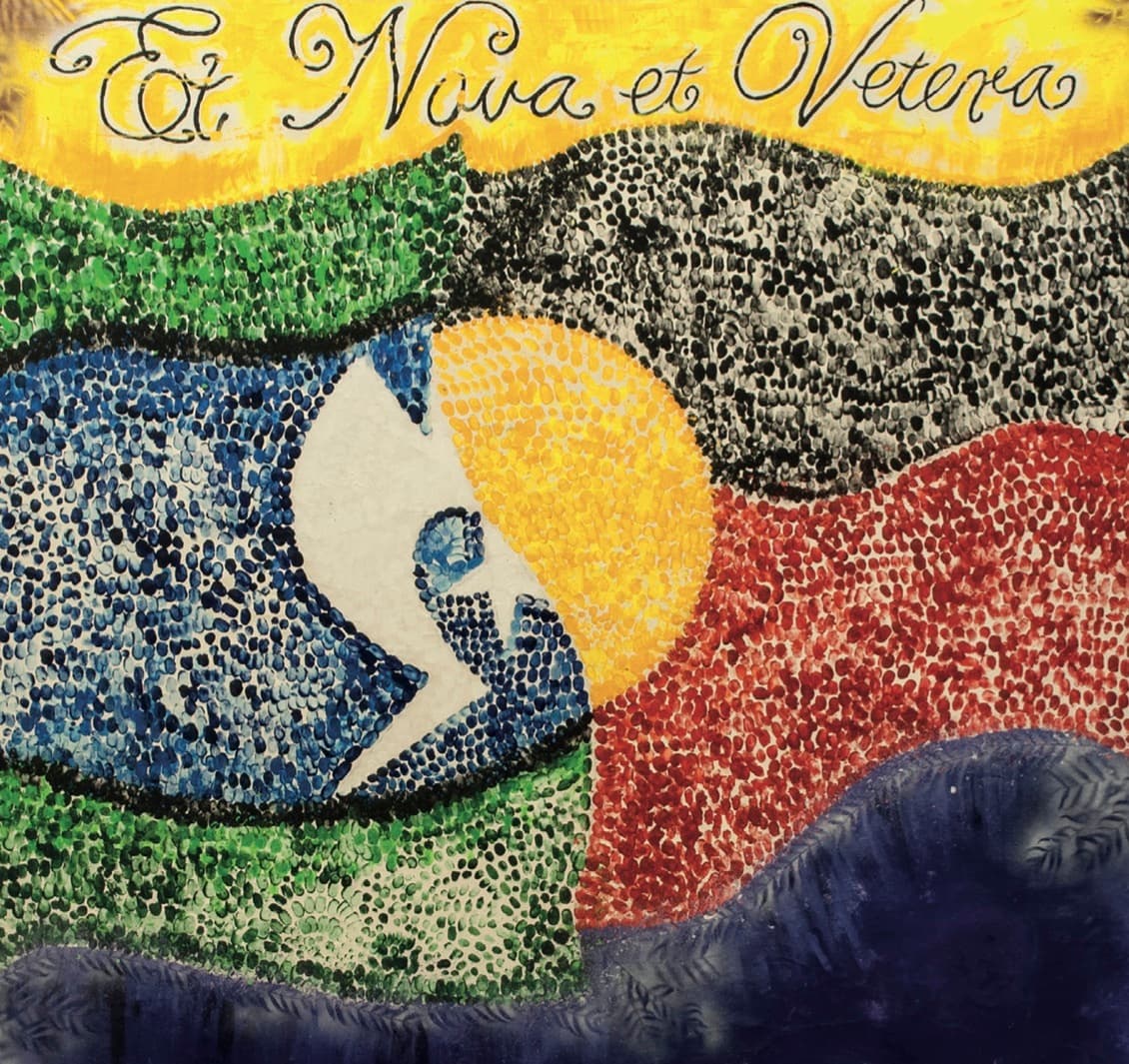
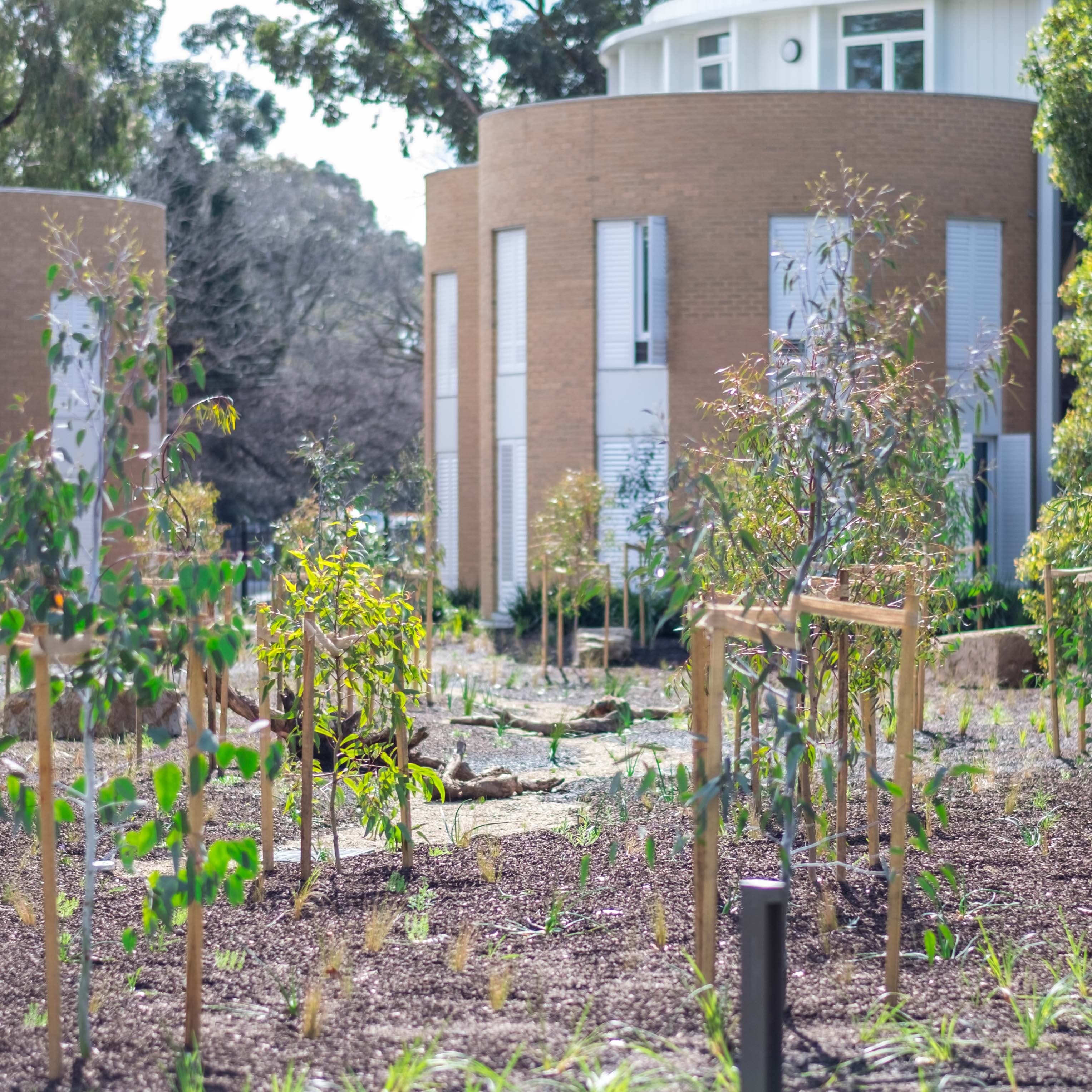
With a focus on diversity and opportunity, Ormond expanded its scholarship programs and embraced global perspectives. Major refurbishments, new graduate facilities, and the first Reconciliation Action Plan reflected the College’s evolving priorities in a rapidly changing higher education landscape.
Innovation and excellence (2014–Present)
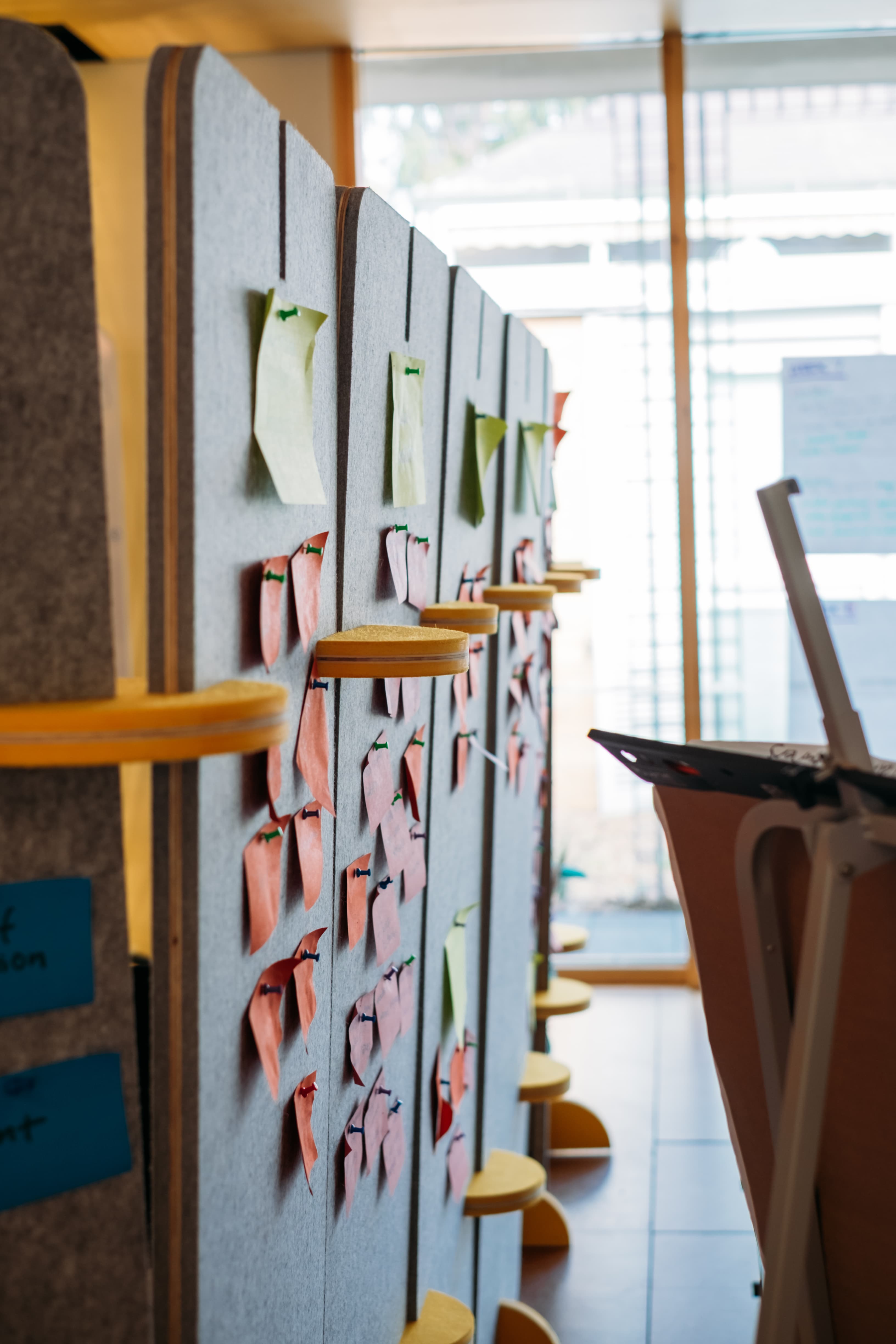
The opening of the Wade Institute signalled a bold new chapter in innovation and entrepreneurial education. In recent years, Ormond has navigated challenges from a global pandemic to shifts in student life, all while celebrating milestones such as 50 years of co‑education and welcoming new leadership under Dr Areti Metuamate.
